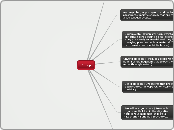Fungi
Microsporidia (Unicellular parasites that live in the tissues of other protists and anmials.)
Microsporia (See description of Microsporidia because this is the only class in the phylum.)
Enterocytozoon bieneusi
Encephalitozoon cuniculi
Ascomycota (Largest group and contain ascospores, meiotic spores, that are found in a sac calledan ascus.)
Pezizomycetes (Their ascoma are typically disklike and it bears on the upper surfaces of a layer of cylindrilical spore-producing spells called asci, where the spores are discharged.)
Sarcoscypha coccinea
Eurotiomycetes (Class that produces sac-like structures that contain ascospores in an ascocarp or spore balls.)
Penicillium candidum
Zygomycota (Organisms form resistant spherical spores during sexual reproduction. They are mostly terrestrial and they live on decaying plant and animal material. There are parasitic and symbiotic types.)
Zygomycetes (Same as zygomycota description because it is Zygomycota's only class.)
Absidia corymbifera
Rhizopus stolonifer
Chytridiomycota (Produce zoospores that have a single flagellum that allows them to move through water.)
Chytridiomycetes (Found in soil, freshwater, and saline estuaries. They are pathogens that commonly affect amphibians and give them infections.)
Synchytrium endobioticum
Batrachochytrium dendrobatidis
Basidiomycota (Organisms that produce basidispores, meiospores, on stalks called basidia.)
Agaricomycetes (Mostly terrestrial organisms that are mostly mushrooms because they have a fruit body/basidiocap. They are known for having long mycellium.)
Coprinopsis cinerea
Battarrea phalloides
Amanita muscaria
Neocallimastigomycota (Anaerobic organisms that live in the digestive tracts of herbivorous mammals. It lacks a mitochondria and has zoospores.)
Neocallimastigomycetes (Same as Neocallimastigomycota description because it is the only class in this phylum.)
Cyllamyces aberensis
Caecomyces sympodialis
Glomeromycota (Organisms that reproduce asexually and invade plant root cells to get nutrients.)
Glomeromycetes (Same as glomeromycota description because it is the only class in this phylum.)
Acaulospora laevis
Acaulospora myriocarpa
